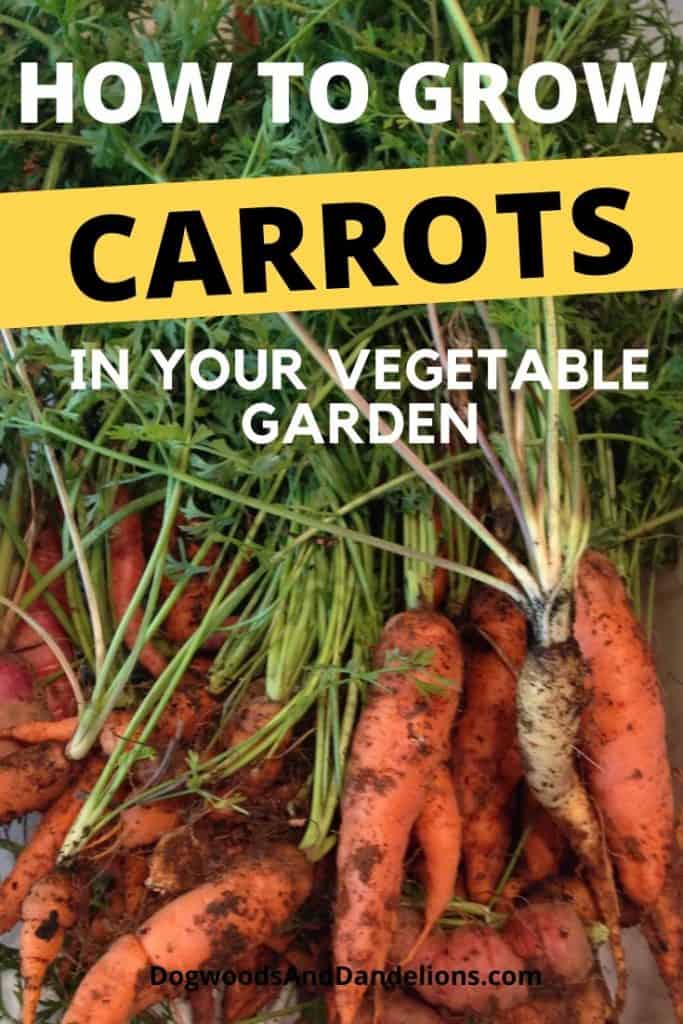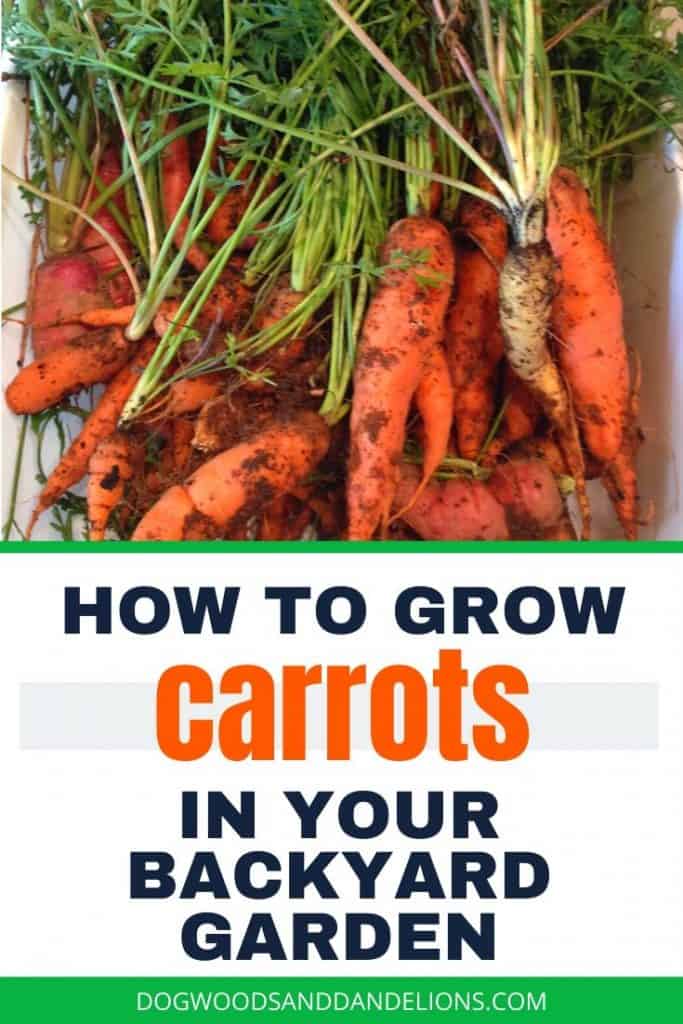How to Grow Carrots
Preview: Carrots are fun to grow but can be a bit tricky to get started. This tutorial shares my best tips and tricks on how to grow carrots in your backyard garden.
Types of Carrots to Grow
There are 5 types of carrots and some are better suited to different areas. Danvers, Chantenay, and ball-type carrots are shorter and blockier and are the best type for clay soils. I always grow one of these three types since my clay soil is very hard.
The traditional carrots that you see in the grocery store are either Nantes or Imperator carrots. These long, slender types are best grown in very loose soil. I have grown these successfully in containers but they don’t grow well in heavy soil.
Carrots come in many colors in addition to orange including purple, yellow, and white. Some seed catalogs even sell mixtures of various colors, usually under the term “rainbow” carrots.
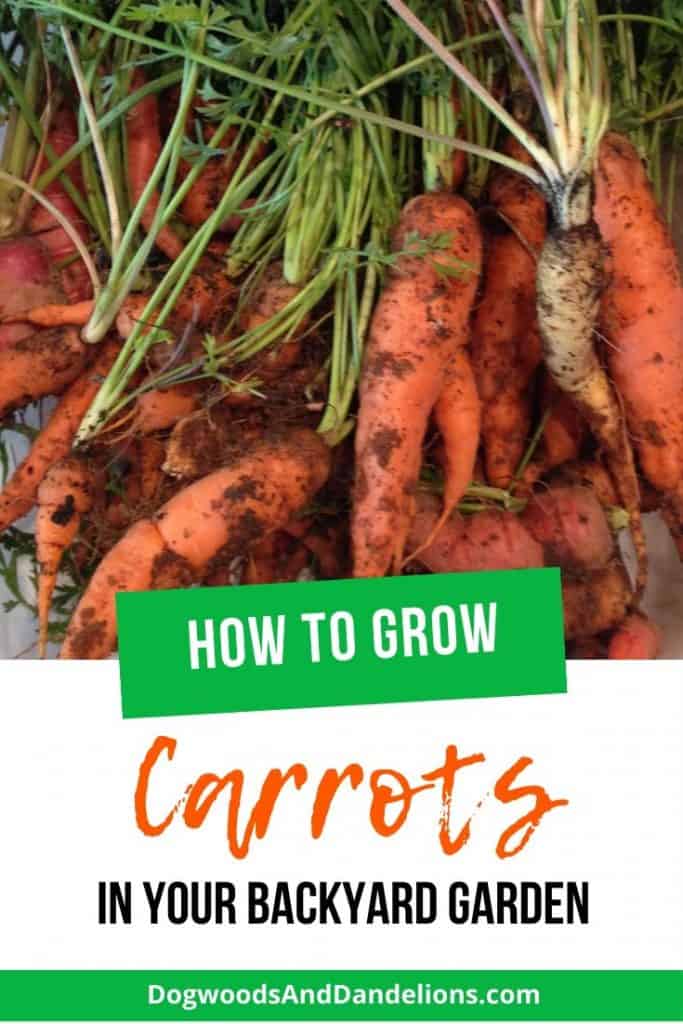
Affiliate Disclosure: Please note that some of the links in this article may be affiliate links and I may receive a small commission if you purchase something through a link. It will not change your cost. As an Amazon Associate, I earn from qualifying purchases. For more information, see my disclosures page.)
How to Plant Carrots
Carrots are a cool season crop, so they grow best in the spring or fall though they can be grown throughout the winter in milder climates. Carrots can be grown during the summer, but it can be hard to get them to germinate. (See below for my tip that really helps!)
Carrot seeds need to be planted where they will be grown. They can be grown in the ground, in raised beds, or in containers. You can’t easily transplant carrots because of their extensive root network.
Carrot seeds are tiny which can make them difficult to plant, especially if you try to plant each one individually. However most packages of carrot seed contains lots, so it’s easiest to scatter the seeds and then thin them later. I find the best way to plant the seeds is to first prepare the planting area by making sure the soil is loose.

If you are planting the Imperator or Nantes types, the soil needs to be loose to a depth of at least 12 inches. If you have clay soil, I recommend growing these types in containers. Growing carrots in heavy clay can cause the carrots to fork or split.
Once the soil is prepared, scatter the seeds over the planting area. Top with a very thin layer (1/4″) of soil or compost. Keep the ground moist until the seeds start to germinate, and until the tops get several inches tall.
My Best Tip for Getting Carrots to Germinate
Getting carrots to germinate can be tricky. The soil needs to be kept consistently moist for the carrot seeds to sprout. I have had the best luck with planting the carrots as above. Then water the soil gently.
Finally, place a wooden board over the carrot seeds. Lift the board daily to check the seeds for any signs of sprouting. If the soil isn’t damp, water gently. It can take up to 3 weeks for carrots to germinate. The cooler the soil, the longer it will take.
As soon as you see the first sign of the carrots sprouting, remove the board. Continue to keep the seeds moist. This one little trick has finally allowed me to grow carrots in my clay soil.
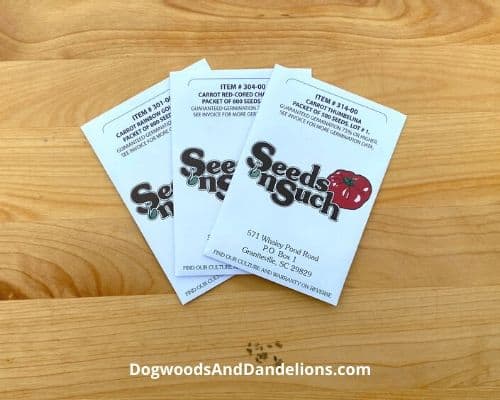
Growing Carrots
Once the carrots are 2-3 inches tall, thin them to 1 carrot every inch. The easiest way to do that is to clip the leaves off the top. This way you don’t disturb the other carrots. You can try to pull them up, but there isn’t enough carrot to eat at this stage.
Once the carrots get 3-4″ tall, you will need to thin them again so they are about 4″ apart. Usually the carrots from this thinning will be large enough to eat, though they will still be on the small side.
For a continuous crop of carrots, plant new seeds every 3 weeks or so. Carrots can be grown in part shade. Shade can be especially helpful if trying to grow carrots during the summer.
As the carrots grow, don’t fertilize often. Too much nitrogen will make the carrots become hairy and they won’t store as well. If the shoulders of the carrots start to peek out of the soil, cover with more to prevent the carrots from developing a bitter taste. Don’t over water the carrots as they get larger. Over-watering can lead to the carrots splitting.
How to Harvest Carrots
You can harvest carrots all throughout the growing season when they are large enough to eat, but they often taste better the longer they are in the ground. However, once they reach the size stated on the seed packet, it is usually best to pull or dig them.
In mild climates where the ground doesn’t freeze, carrots can be left in the ground and pulled or dug as needed. If you try this method, it is best to much the area heavily. Be on the lookout for critters that want a tasty meal of carrots too! Carrots tolerate frost and some people say that a frost makes them sweeter.
Carrots will keep about 6 weeks in the refrigerator if the tops are removed and they are left unwashed. They can also be pickled, pressure canned, or blanched for 3 minutes and frozen. The tops are also edible (I’ve seen recipes online for carrot top pesto!) but some find them bitter tasting.
Carrot Pests & Diseases
Carrots usually aren’t plagued by too many pest and diseases, but there are a few to watch out for.
Carrot Rust Fly can be prevented by using floating row covers. This metallic green fly will lay its eggs on the surface of the soil. The larvae hatch and then start eating the tiny roots on the carrots. They tunnel into the carrots leaving rust colored areas and holes.
Nematodes are a type of microscopic worm that buries into the top third of the carrot leaving holes.
The biggest problem with carrot rust fly and nematodes are that you won’t know you have a problem until you start pulling carrots
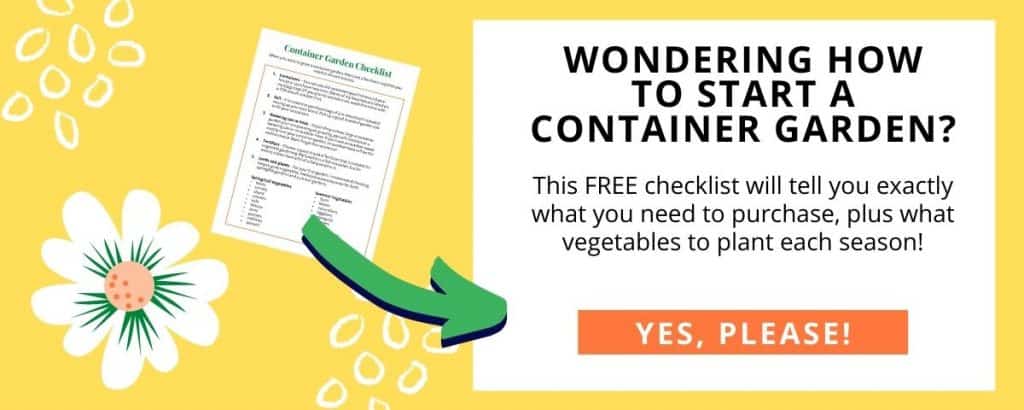
Favorite Varieties of Carrots
I have grown many varieties of carrots over the years, though I usually stick to the shorter types because of my heavy clay soil. However, I have grown the longer carrots in containers and actually had my best harvest growing them in an Earthbox. Listed below are some of my favorite varieties.
- Danvers Half-Long-probably my very favorite variety. These are a good storage variety and very sweet. (Heirloom)
- Tendersweet-This variety is a bit longer at 9-10″ than most other varieties I’ve grown but they did very well in containers. (Heirloom)
- Red Cored Chantenay– These short, fat carrots grow 5-6″ long and have a dark orange skin. A great variety for heavy soil as they rarely fork or split.
- Little Finger-These are small carrots, about the size of a finger. These can be planted densely and don’t need to be thinned as far apart as other varieties. They only grow about 3 1/2 inches long.
Colored Varieties of Carrots
For different colored carrots, these are some varieties I recommend. While I haven’t tried them all, most are readily available in seed catalogs which means they are usually popular kinds. Most are Imperator type, so grow in containers if you have heavy soil. (I am trying a Rainbow mix this year that contains some of these varieties.)
- Red-Red Samurai-It is recommended to plant this variety in summer or fall. This is an open-pollinated (OP) variety.
- Yellow-Yellowstone (OP)-This type stores well in the ground if planted for a winter harvest.
- Purple-Purple Haze-This carrot is a bit shorter than other Imperator types at only 7-8 inches long. It is purple on the outside and bright orange inside. A true beauty for sure. The purple color fades when cooked
- White-Snow Man-One of the few pure white varieties.
- If you want a variety of colors without having to buy individual packets, most seed companies sell a mix of various colors in an individual packet.
How Do You Grow Carrots
Do you grow carrots in your garden? What are your favorite varieties of carrots to grow? I would love for you to leave a comment and let me know.
Looking for other How to Grow… posts for spring and fall vegetables? Check out the ones below.
